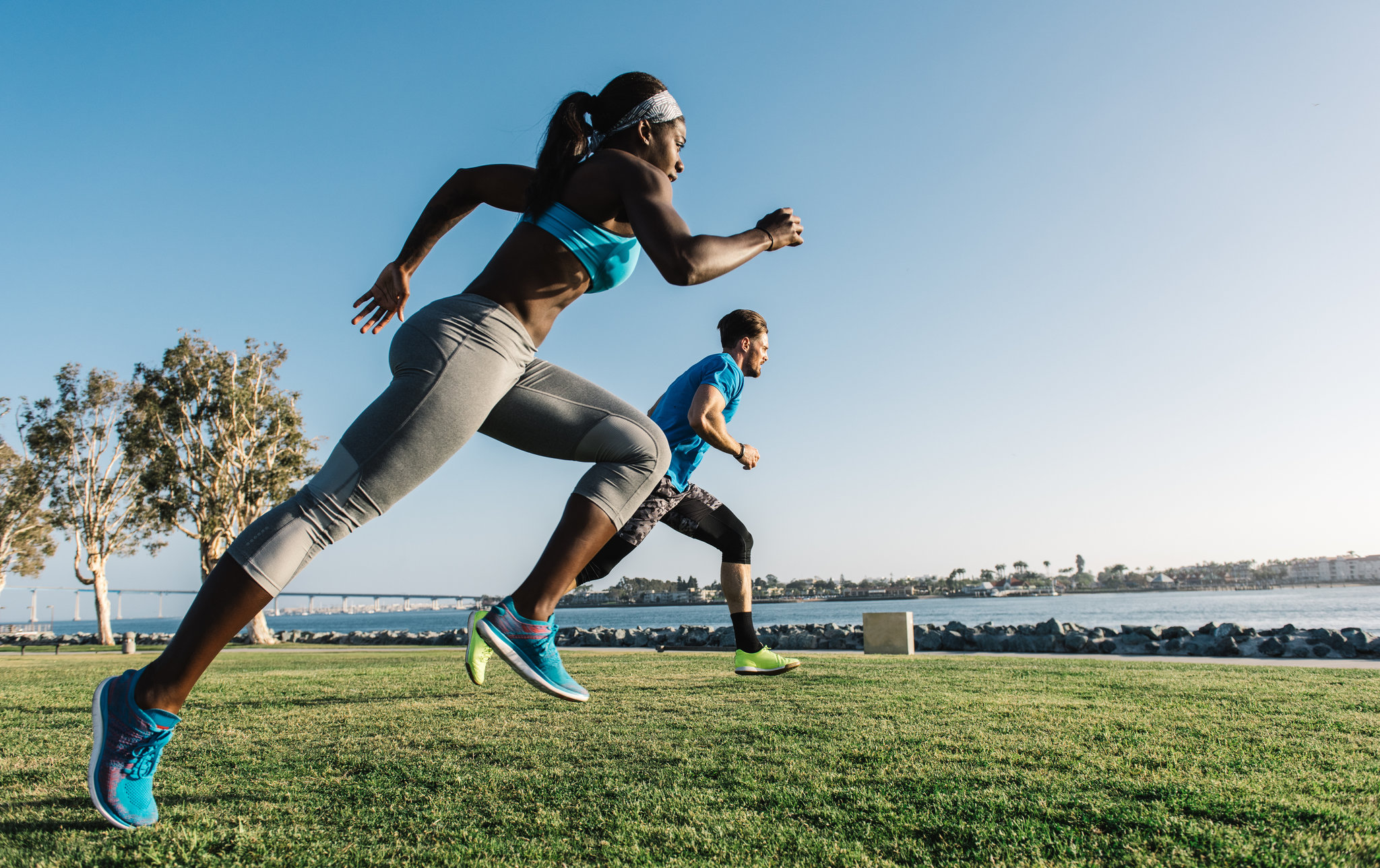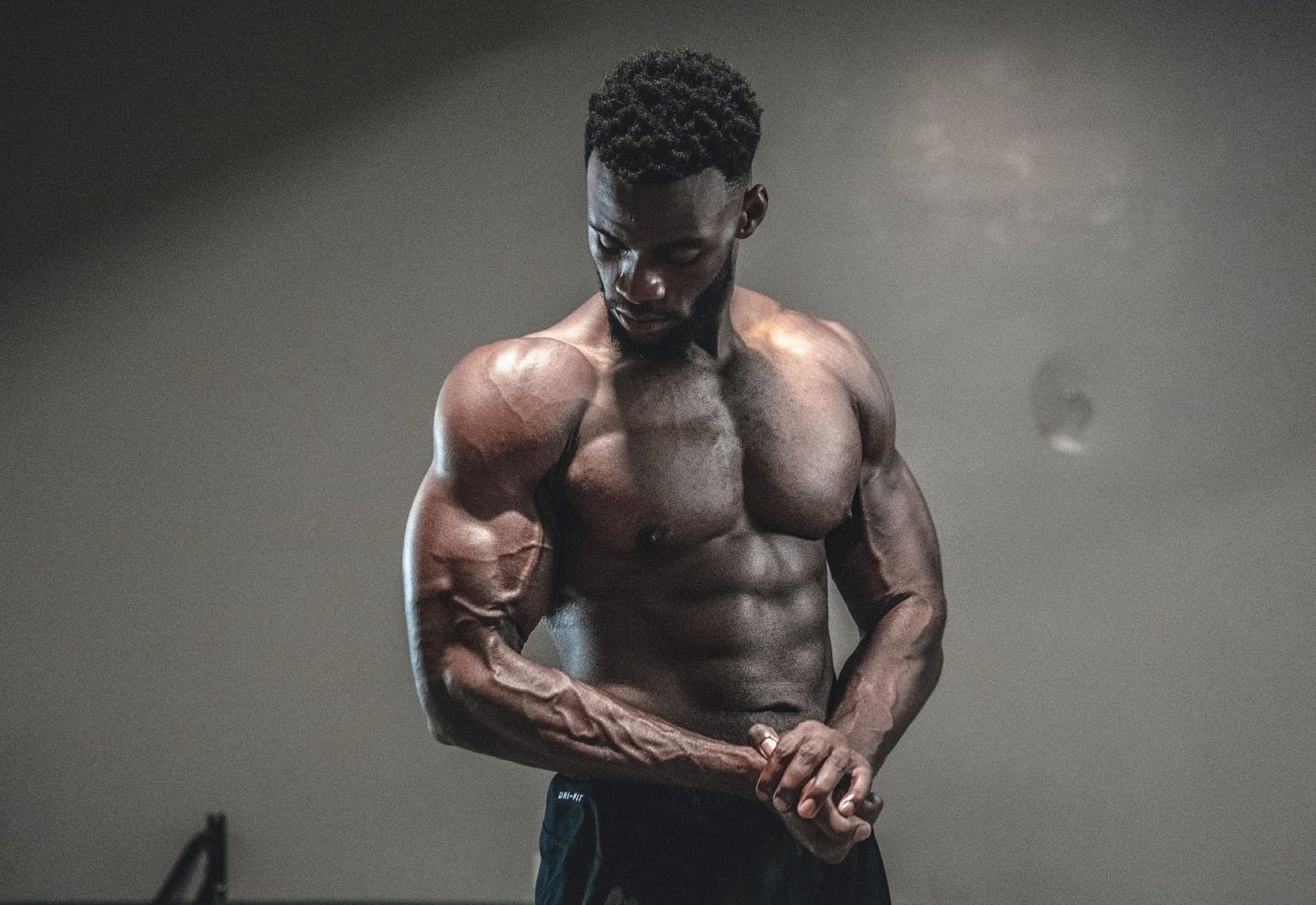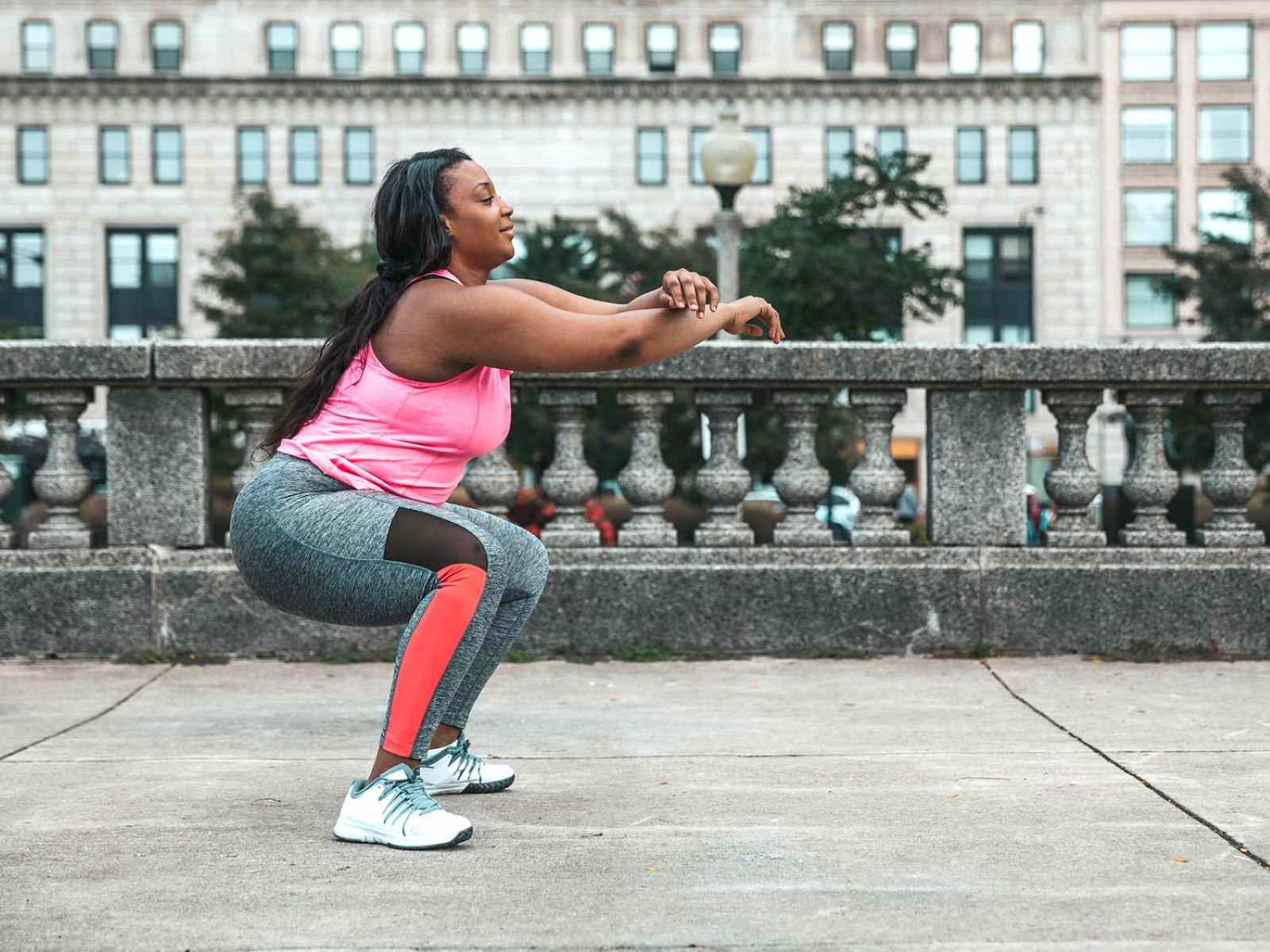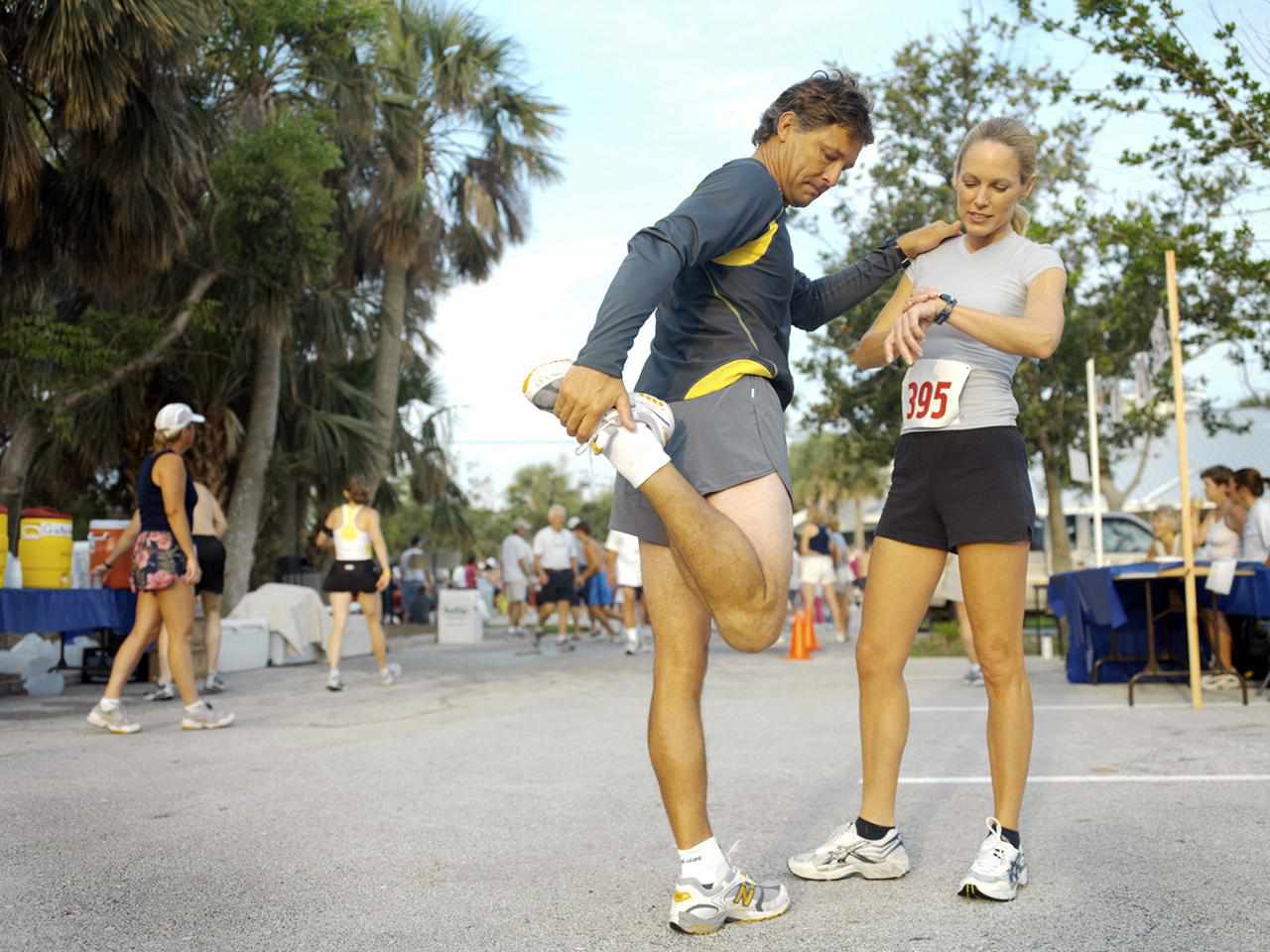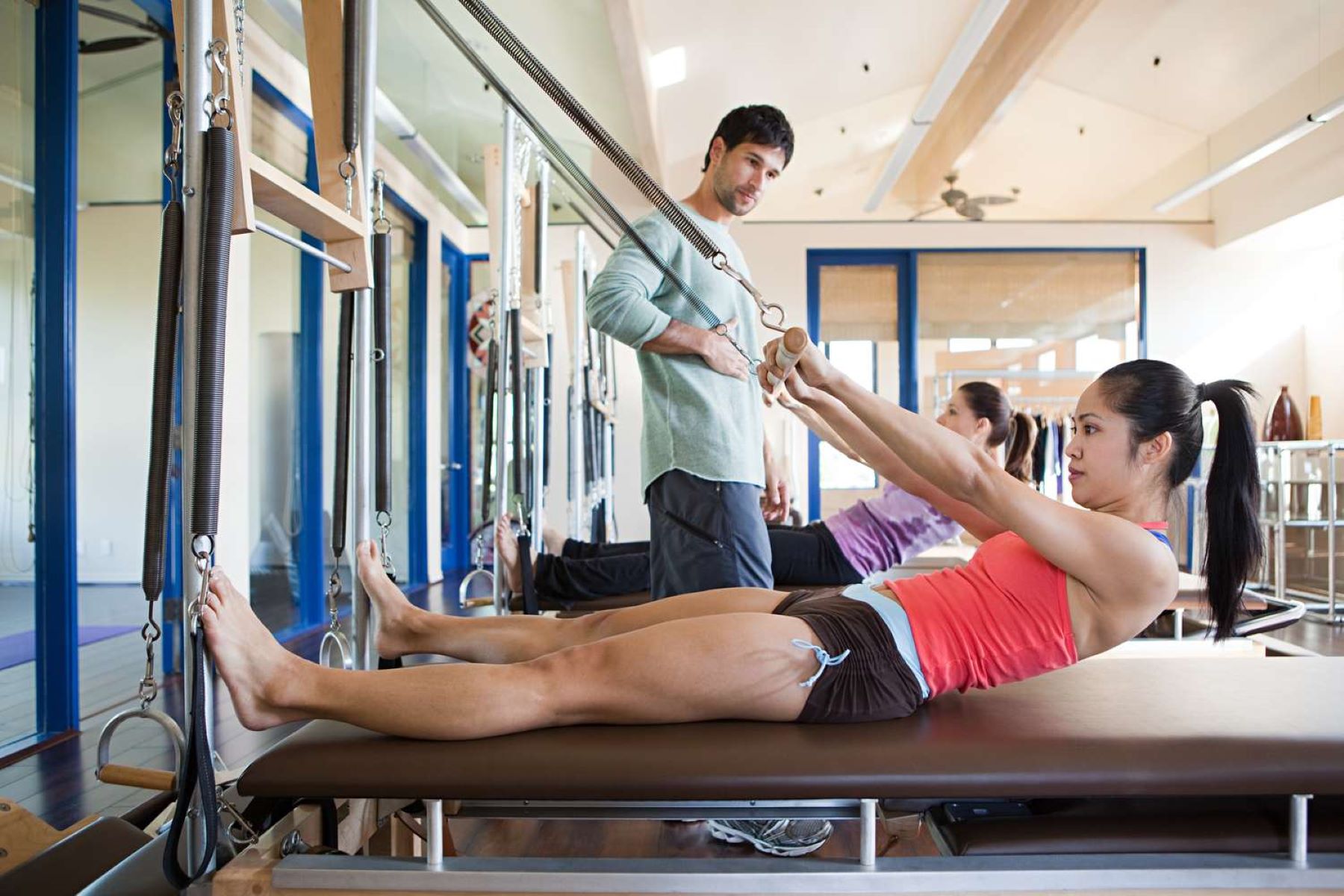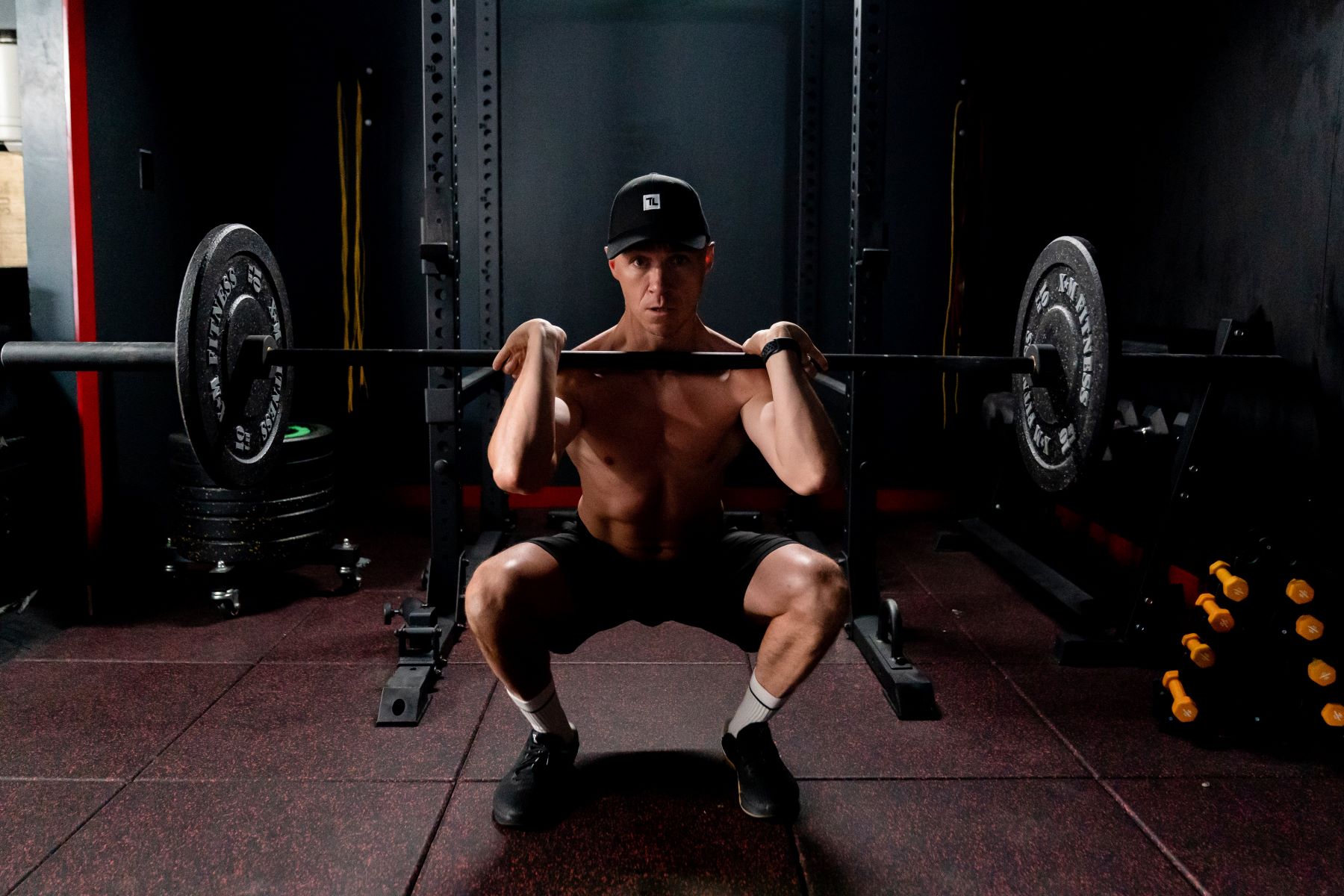

Featured
What Is A Full Body Workout
Modified: January 2, 2024
Discover the benefits of a Featured full body workout. Achieve maximum results with this comprehensive exercise routine. Find out how to engage every muscle group effectively.
Introduction
Achieving a fit and healthy body is a goal that many people strive for. There are various types of workouts that can help you reach this goal, and one popular approach is a full body workout. With its emphasis on targeting multiple muscle groups in a single session, a full body workout is both efficient and effective.
But what exactly does “full body workout” mean? In simple terms, it refers to a workout routine that engages all major muscle groups of the body, including the upper body, lower body, and core. Rather than focusing on just one specific area, a full body workout ensures that you work all areas of your body in a balanced manner.
Full body workouts offer numerous benefits. Not only do they help improve overall strength and muscle tone, but they also promote cardiovascular fitness and enhance flexibility. Additionally, full body workouts can be time-efficient, making them a great option for those with busy schedules.
A typical full body workout consists of various components, including strength training exercises, cardiovascular activities, and core workouts. Each of these components serves a specific purpose in helping you achieve a well-rounded and effective workout.
Ready to get started? In this article, we will delve into the details of full body workouts, including the benefits they offer, the components they consist of, and some sample exercises you can incorporate into your routine. So, grab your workout gear and let’s dive in!
What Does “Full Body Workout” Mean?
A full body workout is a comprehensive exercise routine that targets all major muscle groups of the body in a single session. Unlike split workouts that focus on specific muscle groups on different days, a full body workout aims to engage the entire body in a balanced manner.
This type of workout typically includes exercises for the upper body, lower body, and core muscles. By incorporating a variety of movements and intensities, a full body workout ensures that every major muscle group gets adequate attention and stimulation.
One of the key principles behind a full body workout is the concept of compound exercises. These are exercises that engage multiple joints and muscle groups simultaneously, providing a more efficient and effective workout. Examples of compound exercises include squats, deadlifts, push-ups, and pull-ups.
Another important aspect of a full body workout is progressive overload. This means gradually increasing the intensity or difficulty of the exercises to continually challenge your muscles and promote growth and strength gains. This can be achieved by increasing the weight, reps, or sets of the exercises over time.
Full body workouts are versatile and can be tailored to suit individual fitness goals and preferences. They can be performed using various training modalities such as bodyweight exercises, free weights, resistance bands, or machines. Additionally, the frequency and duration of full body workouts can be adjusted based on factors like fitness level and recovery capacity.
It’s important to note that a full body workout doesn’t necessarily mean spending hours in the gym. It can be designed to be time-efficient, making it a suitable choice for those with busy schedules. By incorporating compound exercises and utilizing supersets or circuits, you can maximize your workout in a shorter period of time.
Overall, a full body workout offers a comprehensive and balanced approach to fitness. It targets all major muscle groups, improves strength and muscle tone, enhances cardiovascular fitness, and promotes overall health and well-being. Whether you’re a beginner looking to start your fitness journey or an experienced gym-goer wanting to switch up your routine, a full body workout can be a highly effective option.
Benefits of Full Body Workouts
Full body workouts offer a range of benefits that make them a popular choice among fitness enthusiasts. Let’s take a closer look at some of the key advantages:
- Efficiency: One of the main benefits of full body workouts is their efficiency. By targeting multiple muscle groups in a single session, you can maximize your training time and see results faster. This is especially beneficial for individuals with limited time to dedicate to exercise.
- Improved cardiovascular fitness: Full body workouts often incorporate cardiovascular exercises such as running, biking, or jumping rope. This helps to elevate your heart rate, increase endurance, and improve overall cardiovascular health.
- Increased muscle tone and strength: By engaging all major muscle groups, full body workouts promote balanced muscle development. This leads to improved muscle tone and strength throughout your entire body. Additionally, incorporating compound exercises in your routine can stimulate the release of growth hormone, further aiding in muscle growth.
- Burns more calories: Due to their high intensity and engagement of multiple muscle groups, full body workouts are effective calorie burners. This can aid in weight loss and help maintain a healthy body composition.
- Enhanced flexibility and mobility: Many full body exercises involve dynamic movements that improve flexibility and mobility. These exercises help to increase joint range of motion, improve muscle flexibility, and reduce the risk of injury.
- Boosted metabolism: Full body workouts have the potential to elevate your metabolism both during and after exercise. This is known as the “afterburn effect” or excess post-exercise oxygen consumption (EPOC). By incorporating strength training and intense cardio exercises in your routine, you can continue to burn calories and fat long after your workout is over.
- Functional fitness: Full body workouts mimic real-life movements and activities, making them highly functional. They improve your ability to perform daily tasks and activities with ease, such as lifting objects, climbing stairs, or carrying groceries.
These are just a few of the many benefits that full body workouts offer. Whether your goal is to build strength, increase endurance, or improve overall fitness, incorporating full body workouts into your routine can help you achieve your desired results.
Components of a Full Body Workout
A well-designed full body workout consists of several key components that work together to engage all major muscle groups and provide a balanced and effective training session. Let’s explore the primary components of a full body workout:
- Strength Training: One of the main components of a full body workout is strength training. This involves exercises that target different muscle groups and utilize resistance to build strength and muscle. Common strength training exercises include squats, lunges, deadlifts, bench presses, rows, and shoulder presses. It is important to include exercises that target both upper and lower body muscles to achieve a balanced workout.
- Cardiovascular Exercise: Incorporating cardiovascular exercise is crucial to a full body workout. This component aims to elevate your heart rate and improve cardiovascular fitness. It can include activities such as running, cycling, swimming, or high-intensity interval training (HIIT). Cardiovascular exercise helps burn calories, increase endurance, and improve overall cardiovascular health.
- Core Work: Strengthening the core is an essential part of a full body workout. A strong core provides stability, improves posture, and helps prevent injuries. Core exercises include planks, Russian twists, mountain climbers, and bicycle crunches. It is important to include exercises that target different areas of the core, including the abs, obliques, and lower back.
- Flexibility and Mobility: While often overlooked, flexibility and mobility exercises are vital for a well-rounded full body workout. Stretching exercises help improve muscle flexibility and joint range of motion, reducing the risk of injuries and muscle imbalances. Incorporate dynamic stretches, such as arm circles, leg swings, and hip openers, into your routine to prepare your body for the workout and aid in recovery.
- Rest and Recovery: Rest and recovery play a crucial role in any workout program. Allow your body time to rest and repair between full body workouts to avoid overtraining and improve overall performance. It’s important to listen to your body and adjust your training frequency and intensity accordingly.
Remember, the key to an effective full body workout is to include exercises that target all major muscle groups, incorporate a mix of strength and cardiovascular exercises, and focus on core stability and flexibility. By incorporating these components into your routine, you can achieve a well-rounded and challenging workout that promotes overall fitness and helps you reach your goals.
Sample Full Body Workout Routine
Looking for a sample full body workout routine to kickstart your fitness journey? Here’s an example that incorporates the key components mentioned earlier:
- Warm-up: Begin with a 5-10 minute dynamic warm-up to prepare your muscles and joints for the workout. This can include exercises such as jogging in place, arm circles, leg swings, and bodyweight squats.
- Strength Training: Perform 2-3 sets of each exercise, with 8-12 repetitions per set. Rest for 1-2 minutes between sets.
- Squats
- Push-ups
- Rows (using dumbbells or resistance bands)
- Walking Lunges
- Shoulder Presses (with dumbbells or resistance bands)
- Deadlifts
- Cardiovascular Exercise: Choose your preferred cardio activity and perform it for 20-30 minutes. This can be running, cycling, swimming, or any other activity that elevates your heart rate.
- Core Work: Complete a circuit of core exercises, performing 2-3 sets of each exercise, with 12-15 repetitions per set. Rest for 30 seconds to 1 minute between sets.
- Plank
- Crunches
- Leg Raises
- Russian Twists
- Cool-down: Finish your workout with a 5-10 minute cool-down, which can include static stretches for all major muscle groups. Hold each stretch for 15-30 seconds.
This sample full body workout routine covers all the major components, including strength training, cardiovascular exercise, core work, and flexibility. Remember to adjust the weights and intensity based on your fitness level and listen to your body for any signs of fatigue or discomfort.
It’s important to note that this is just one example, and there are numerous variations and modifications you can make to suit your preferences and goals. You can also incorporate other exercises or equipment based on your access and availability.
Consulting with a fitness professional or personal trainer can also help you customize a full body workout routine that aligns with your specific needs and goals. They can provide guidance on proper form, progression, and intensity to ensure you get the most out of your workouts while minimizing the risk of injury.
Remember, consistency and progression are key when it comes to full body workouts. Gradually increase the weights, repetitions, or sets over time to continue challenging your muscles and promoting growth and strength gains.
Common Full Body Exercises
There are numerous full body exercises that effectively engage multiple muscle groups and provide a comprehensive workout. Incorporating a variety of these exercises into your routine can help you achieve a well-rounded and balanced workout. Here are some of the most common full body exercises:
- Squats: Squats are a compound exercise that targets the lower body, including the quadriceps, hamstrings, and glutes. They also engage the core and help improve lower body strength and stability.
- Deadlifts: Deadlifts are a powerful exercise that target the posterior chain, including the hamstrings, glutes, and back muscles. They are excellent for building overall strength and promoting proper hip hinge movement.
- Push-ups: Push-ups are a classic bodyweight exercise that targets the chest, shoulders, triceps, and core. They can be modified for different fitness levels and are effective for developing upper body strength and stability.
- Pull-ups: Pull-ups are a challenging exercise that primarily targets the back, specifically the latissimus dorsi muscles. They also engage the biceps, shoulders, and core, and contribute to improved upper body strength and stability.
- Lunges: Lunges are a unilateral exercise that targets the lower body, including the quadriceps, hamstrings, and glutes. They also help improve balance, stability, and coordination.
- Burpees: Burpees are a full body exercise that combines a squat, push-up, and jump. They engage multiple muscle groups and elevate the heart rate, making them an excellent choice for conditioning and cardiovascular fitness.
- Planks: Planks are a core exercise that target the abdominal muscles, obliques, and lower back. They help improve core strength, stability, and posture.
- Shoulder Presses: Shoulder presses are an upper body exercise that primarily target the shoulder muscles, including the deltoids. They also engage the triceps, chest, and core, helping to build upper body strength and stability.
- Bicycle Crunches: Bicycle crunches are an effective exercise for targeting the abdominal muscles, specifically the obliques. They also engage the hip flexors and contribute to improved core strength and stability.
These are just some of the common full body exercises you can incorporate into your workouts. Remember to focus on proper form and technique for each exercise to maximize effectiveness and minimize the risk of injury.
Additionally, there are various ways to modify or progress these exercises based on your fitness level and goals. You can increase or decrease the intensity, adjust the range of motion, or add weights to challenge yourself further. Consulting with a fitness professional can provide guidance on proper form, modifications, and progressions specific to your needs.
By incorporating a combination of these exercises into your full body workout routine, you can target all major muscle groups, improve overall strength and conditioning, and achieve a well-rounded and effective workout.
Tips for Effective Full Body Workouts
To make the most out of your full body workouts and ensure their effectiveness, consider the following tips:
- Plan your workouts: Create a weekly workout plan that includes dedicated days for full body workouts. This helps you stay consistent and ensures that all major muscle groups are targeted adequately.
- Vary your exercises: Incorporate a variety of exercises that target different muscle groups and movement patterns. This helps prevent boredom, promotes muscle balance, and stimulates further muscle growth.
- Focus on proper form: Pay attention to proper form and technique for each exercise. This increases the effectiveness of the exercise and reduces the risk of injury. If you’re unsure about proper form, consider working with a qualified fitness professional.
- Progressively overload: Continually challenge your muscles by gradually increasing the weights, repetitions, or sets. This helps promote strength gains and prevents plateauing in your progress.
- Include progressive cardio training: Incorporate cardio exercises that progressively challenge your cardiovascular fitness. This can include increasing the duration, intensity, or variety of your cardiovascular workouts.
- Listen to your body: Pay attention to your body’s signals and adjust your workout intensity or rest days accordingly. Rest and recovery are crucial for muscle growth and overall well-being.
- Stay hydrated: Drink plenty of water before, during, and after your workouts to stay properly hydrated. Dehydration can negatively impact performance and hinder recovery.
- Fuel your body: Eat a balanced diet that includes sufficient protein, carbohydrates, and healthy fats to support your workout and aid in muscle recovery and growth.
- Get enough sleep: Ensure you’re getting enough quality sleep to support your body’s recovery and muscle growth. Aim for 7-9 hours of sleep each night.
- Track your progress: Keep a training journal or use a fitness app to track your workouts, weights, and progress. This helps you stay motivated and see how far you’ve come.
Remember, the key to effective full body workouts is consistency, appropriate progression, and listening to your body. By incorporating these tips into your routine, you can maximize the benefits of your full body workouts and achieve your fitness goals.
Conclusion
Incorporating full body workouts into your fitness routine can offer a plethora of benefits. These workouts engage all major muscle groups, promote overall strength and muscle tone, improve cardiovascular fitness, and enhance flexibility and mobility. Whether you are a beginner looking to start your fitness journey or an experienced gym-goer looking to switch up your routine, full body workouts can be a highly effective option.
A well-designed full body workout includes several key components, such as strength training exercises, cardiovascular activities, core workouts, and flexibility and mobility exercises. By incorporating these components, you can ensure a balanced and comprehensive workout that targets all areas of your body.
When designing your full body workout routine, it is important to plan your workouts, vary your exercises, focus on proper form, progressively overload, and listen to your body’s signals. Staying hydrated, fueling your body with proper nutrition, getting enough sleep, and tracking your progress are also vital for achieving optimal results.
Remember, everyone’s fitness journey is unique, and it may take time to find the right combination of exercises and intensity that works best for you. Consulting with a fitness professional can provide valuable guidance and support in creating a personalized full body workout routine that aligns with your goals and fitness level.
So, whether you’re aiming to build strength, improve endurance, or maintain overall fitness, incorporating full body workouts into your routine can help you achieve your desired results and lead a healthier, more active lifestyle.

